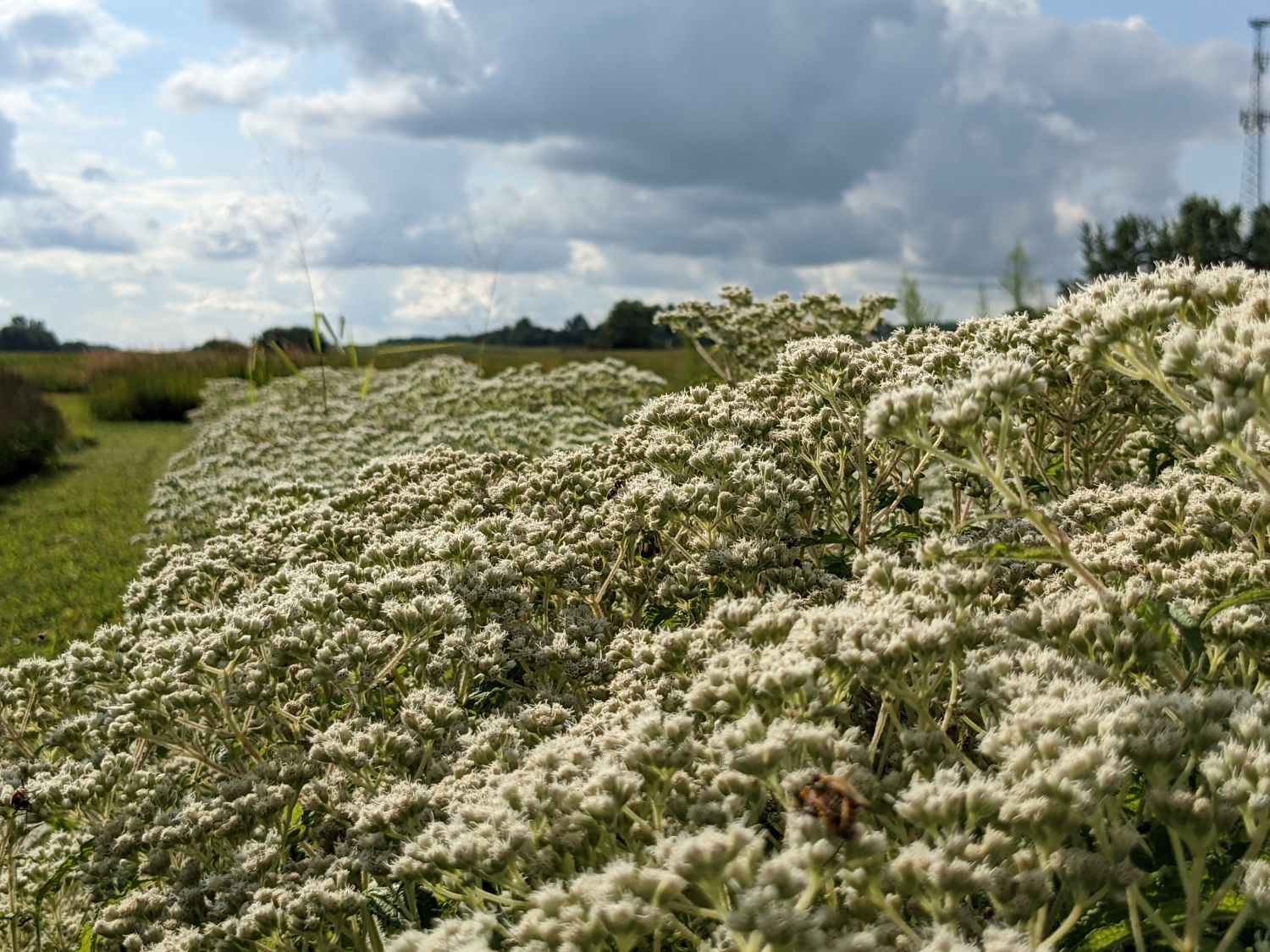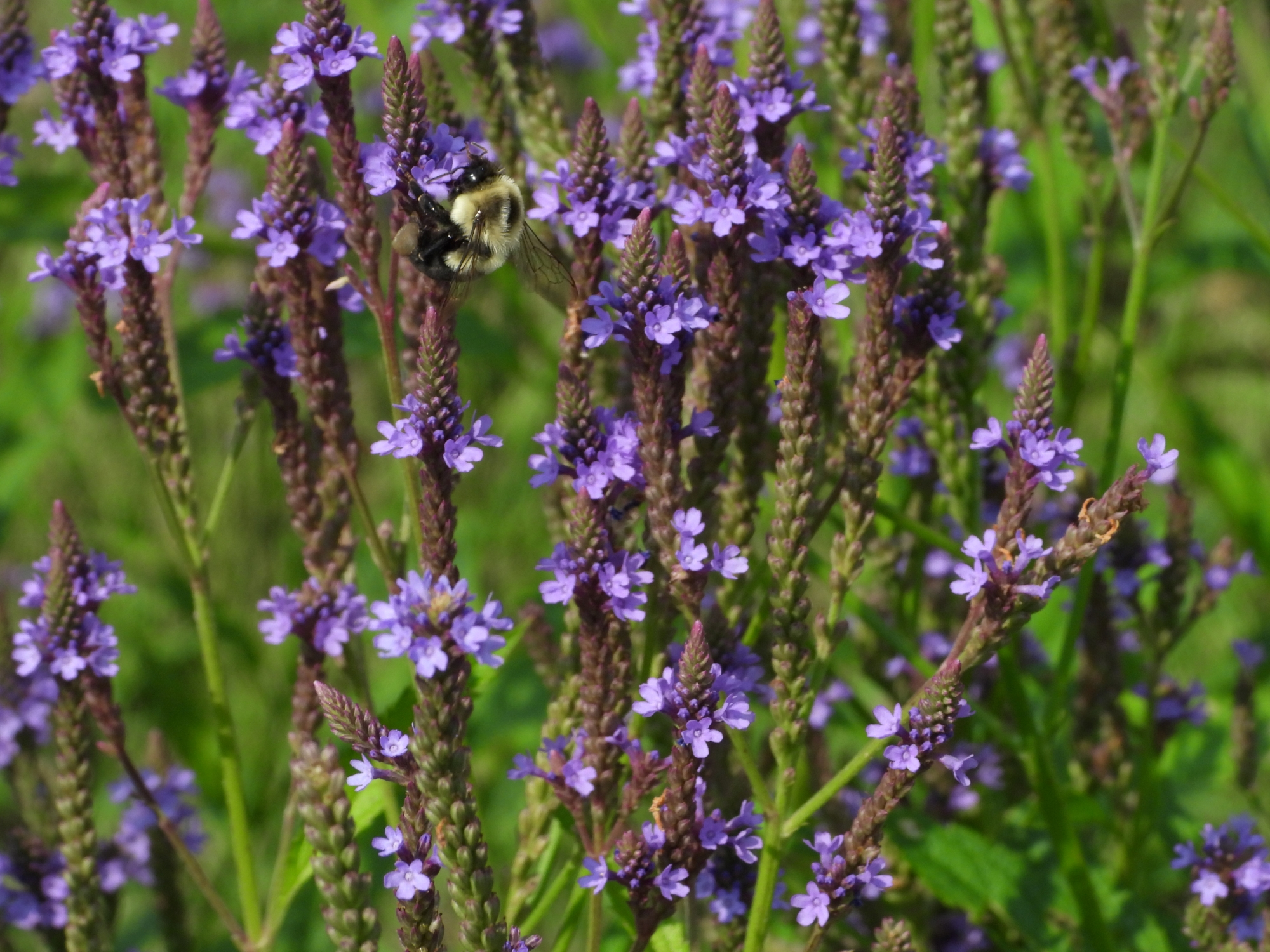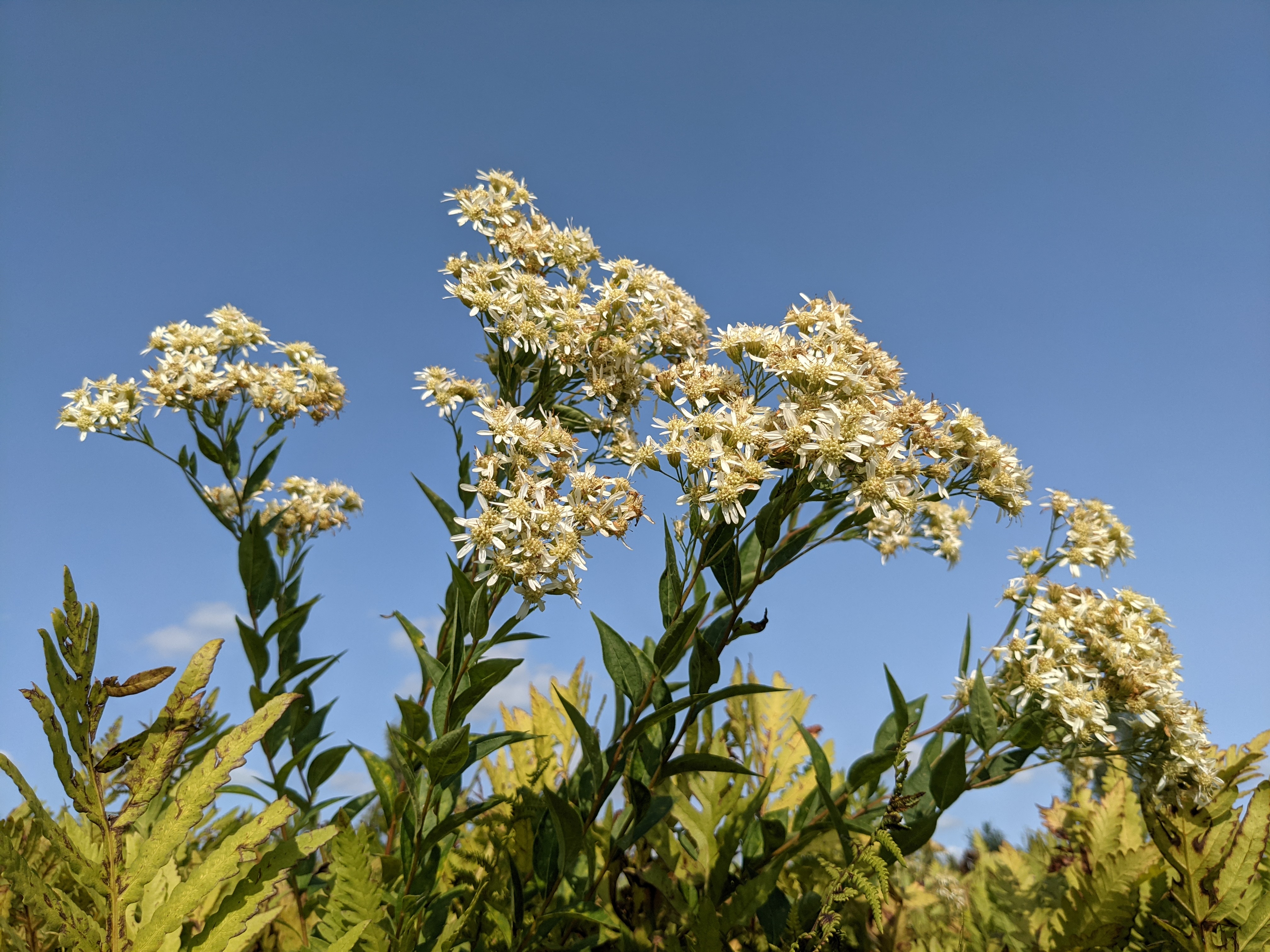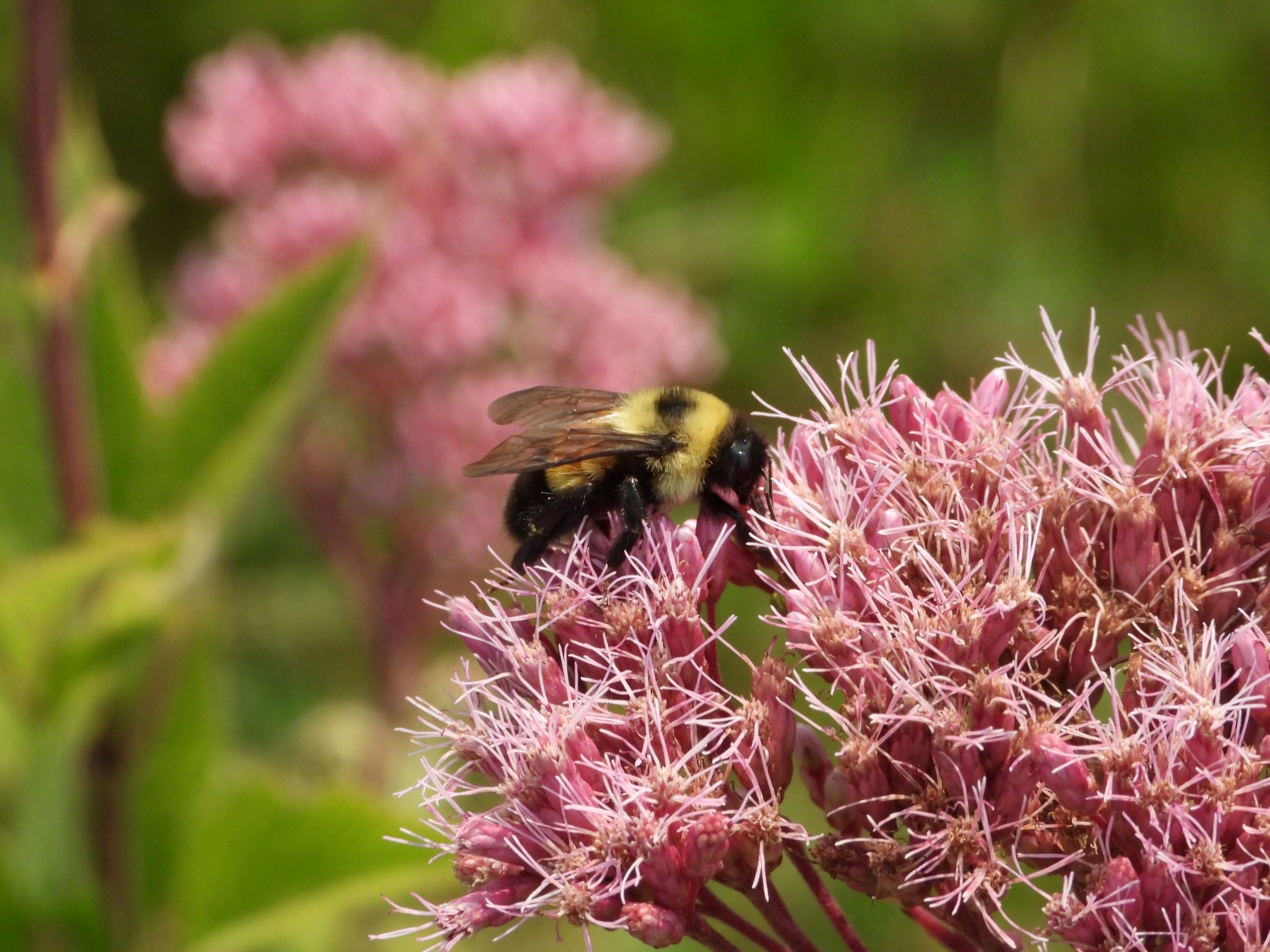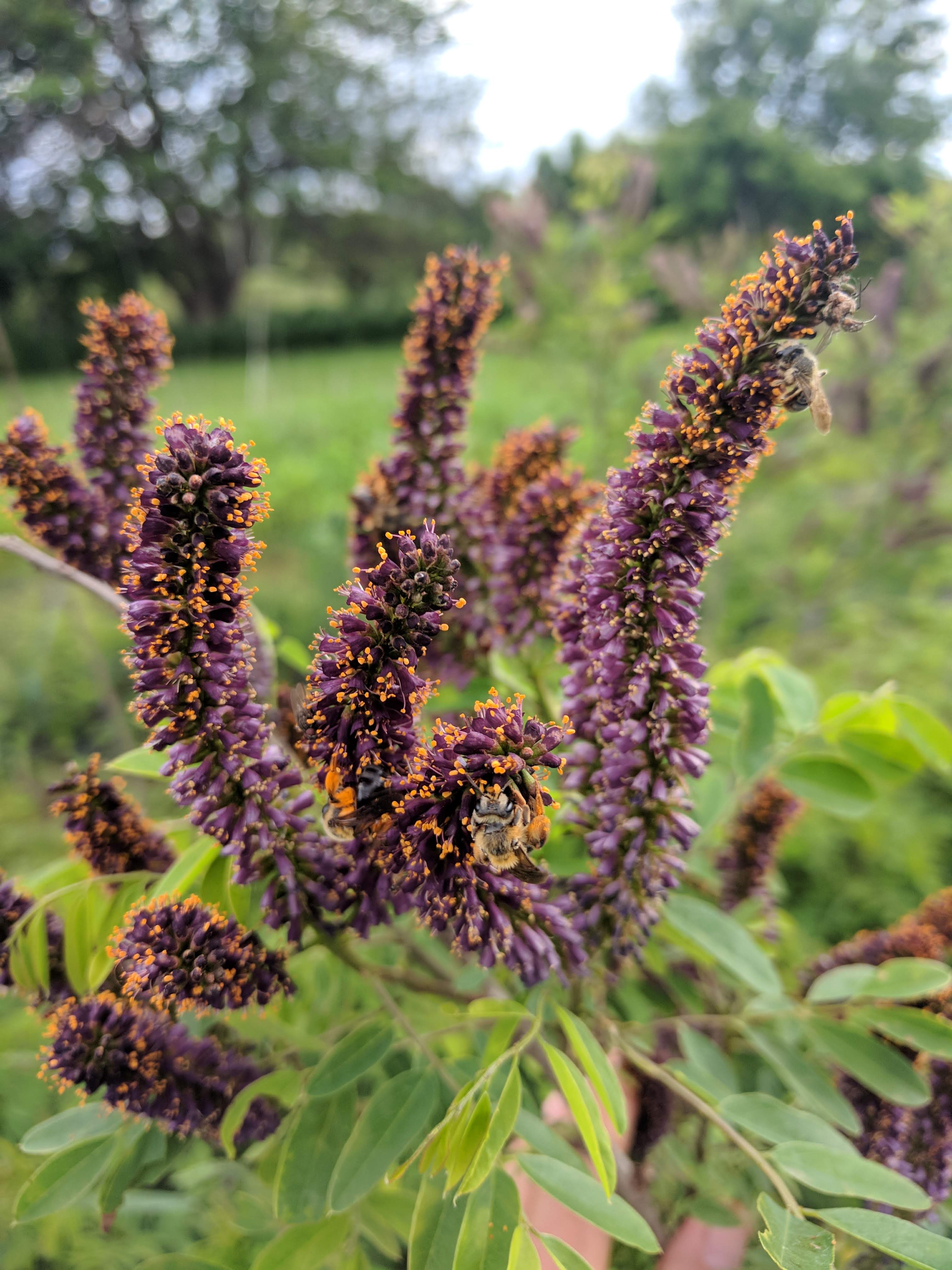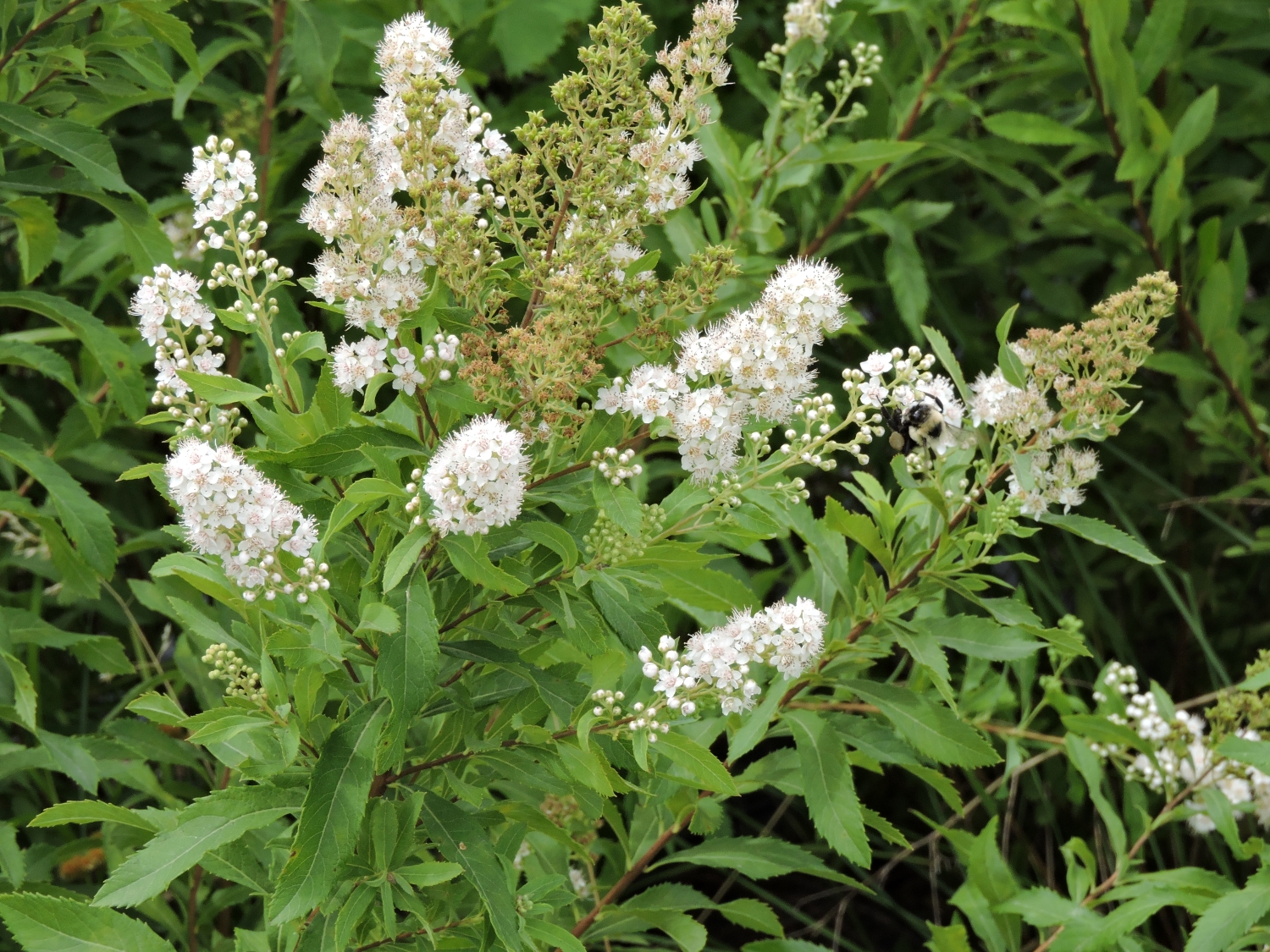Recently Released Species
These species are now available as stock seed for native seed growers in Iowa and neighboring counties of surrounding states. For species collected in 2021 and later, the zone designations have changed. Zone NI refers to collections made in roughly the northern half of Iowa, while Zone SI is developed from collections made in the southern half of the state. More information on these zone designations is found on the Source-ID Seed Development page.
Eupatorium perfoliatum
Zone NI — new in 2022. White flower heads persist into fall, providing food for beetles, flies, wasps, butterflies, and bees. Plants produce seed in first year when transplanted as plugs into irrigated plots.
Verbena hastata
Zone NI — new in 2022. Blooms in late summer, providing food for a wide diversity of bees. Plants are highly productive in first year when started as plugs in irrigated plots. Seed is easy to clean.
Doellingeria umbellata
Zone NI — new in 2022. This late summer bloomer that grows in wet soils is a pollinator resource for diverse insects including specialist bees. First year plants produce some seed, but are more productive the second year.
Eutrochium maculatum
Zone 1. Forms dense stands with few weed issues in irrigated production plots. The showy pink flower clusters attract rusty patched bumble bees and monarch butterflies, along with numerous other pollinator species.
Amorpha fruticosa
Zone 1, 2, and 3. This is leadplant's bigger cousin. It produces abundant purple flowers in June that are visited by diverse native bees. Seed production is higher in wet soils. This species has potential for use as a living snow fence.
Spiraea alba
Zones 1 and 2. White blooms in mid-late summer attract diverse bumble bees. This is a long-lived shrub with numerous delicate stems that form a dense production plot. It is one of the last species harvested in fall. The seeds are very small.


